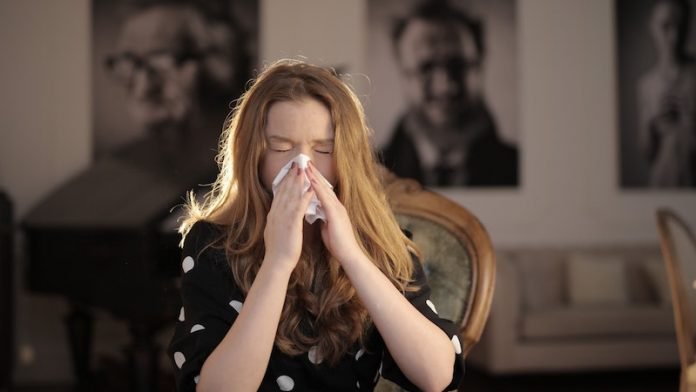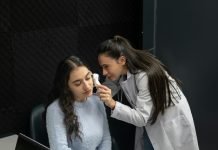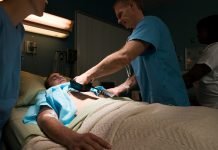
In a new study from Pacific Northwest National Laboratory, researchers raise questions about how far respiratory droplets, like those that transmit the virus that causes COVID-19, can travel before becoming harmless.
Can the airborne particles that carry the virus remain infectious not just for a few feet but rather more than 200 feet, farther than the length of a hockey rink?
They found that small respiratory particles can remain moist and airborne for a longer time and greater distance than scientists have recognized.
In the study, the team took a long look at the mucus that coats the respiratory droplets that people spew from their lungs.
Scientists know that mucus allows many viruses to travel further than they otherwise would, enabling them to journey from one person to another.
Conventional wisdom has been that very small, aerosolized droplets of just a few microns, like those produced in the lungs, dry out in air almost instantly, becoming harmless.
But the team found that mucus changes the equation.
The team found that the mucus shell that surrounds respiratory droplets likely reduces the evaporation rate, increasing the time that viral particles within the droplets are kept moist.
Since enveloped viruses like SARS-CoV-2 have a fatty coating that must be kept moist for the virus to be infectious, the slower evaporation allows viral particles to be infectious longer.
The team estimates that droplets encased in mucus could remain moist for up to 30 minutes and travel up to about 200 feet.
The focus on mucus helps address another question: how the virus moves in a multiroom office building.
The scientists found that both low and high levels of filtering were effective at reducing levels of respiratory droplets in all rooms.
Filtration quickly cut down the levels of droplets in the adjoining rooms—within about three hours, to one-third the level or less without filtration.
The team also found that increasing ventilation rapidly reduced particle levels in the source room. But particle levels in the other connected rooms jumped immediately.
Ultimately, after the initial spike, levels of droplets in all the rooms gradually dropped after three hours with filtration and after five hours without it.
The scientists say that increased air exchange for crowded spaces may be beneficial in certain situations, like large conferences or school assemblies, but in normal work and school conditions, it may actually increase transmission rates throughout all rooms of a building.
If you care about Covid, please read studies about why omicron is spreading so rapidly, and current COVID-19 vaccines cannot effectively prevent omicron infection.
For more information about health, please see recent studies about drug combo that can effectively fight COVID-19, and results showing that to prevent Omicron, you need an mRNA booster shot.
The study is published in International Communications in Heat and Mass Transfer and was conducted by Leonard Pease et al.
Copyright © 2022 Knowridge Science Report. All rights reserved.




